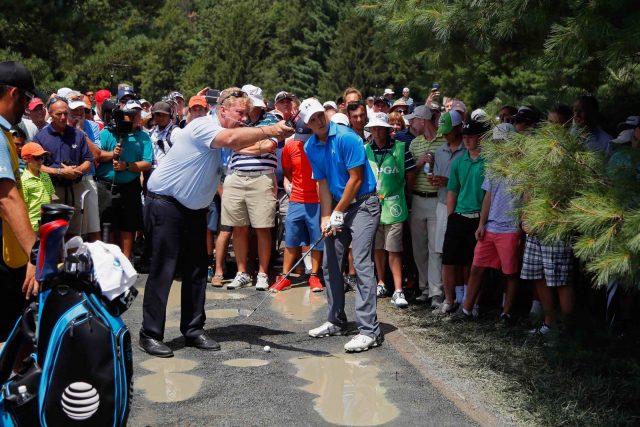The Rules of Golf are be taken firmly into the 21st century as part of a concerted attempt by governing bodies to make the game easier to play.

In the first major overhaul of the rules since 1984, the number of rules is to be reduced from 34 to 24, while those that remain will be designed to fit the needs of today’s game, and the way it is played around the world. In another bold move, the outdated language used to describe the rules will be replaced with modern phraseology that will be much easier to understand.
The release of the rules revisions begins a six-month evaluation period, during which all golfers can learn about the proposed changes and provide input before they are finalised in 2018, and take effect on January 1, 2019.
Highlights of the proposed rule changes include:
Elimination or reduction of ‘ball moved’ penalties
There will be no penalty for accidentally moving a ball on the putting green or in searching for a ball; and a player is not responsible for causing a ball to move unless it is ‘virtually certain’ that he or she did so.
Relaxed putting green rules
There will be no penalty if a ball played from the putting green hits an unattended flagstick in the hole; players may putt without having the flagstick attended or removed. Players may repair spike marks and other damage made by shoes, animal damage and other damage on the putting green and there is no penalty for merely touching the line of putt.
Relaxed rules for penalty areas
Red and yellow-marked penalty areas may cover areas of desert, jungle, lava rock, etc., in addition to areas of water; expanded use of red penalty areas where lateral relief is allowed; and there will be no penalty for moving loose impediments or touching the ground or water in a penalty area.
Relaxed bunker rules
There will be no penalty for moving loose impediments in a bunker or for generally touching the sand with a hand or club. A limited set of restrictions (such as not grounding the club right next to the ball) is kept to preserve the challenge of playing from the sand; however, an extra relief option is added for an unplayable ball in a bunker, allowing the ball to be played from outside the bunker with a two-stroke penalty.
Relying on player integrity
A player’s ‘reasonable judgment’ when estimating or measuring a spot, point, line, area or distance will be upheld, even if video evidence later shows it to be wrong; and elimination of announcement procedures when lifting a ball to identify it or to see if it is damaged.
Pace-of-play support
Reduced time for searching for a lost ball from five minutes to three minutes; affirmative encouragement of ‘ready golf’ in stroke play; recommending that players take no more than 40 seconds to play a stroke, and other changes intended to help with pace of play.
Simplified way of taking relief
A new procedure for taking relief by dropping a ball in and playing it from a specific relief area; relaxed procedures for dropping a ball, allowing the ball to be dropped from just above the ground or any growing thing or other object on the ground.
The proposed 24 new rules, reduced from the current 34, have been written in a user-friendly style with shorter sentences, commonly used phrases, bulleted lists and explanatory headings.
David Rickman, Executive Director of Governance at The R&A, said: “Our aim is to make the rules easier to understand and to apply for all golfers. We have looked at every rule to try to find ways to make them more intuitive and straightforward, and we believe we have identified many significant improvements. It is important that the rules continue to evolve and remain in tune with the way the modern game is played but we have been careful not to change the game’s longstanding principles.”
Golfers are being encouraged to review the proposed changes and submit feedback online via worldwide survey technology that can be accessed at randa.org from now until 31 August 2017. The feedback will be reviewed by The R&A and the USGA in establishing the approved final version of golf’s new Rules. These are due to be released in mid-2018, ahead of a 1 January 2019 implementation.




